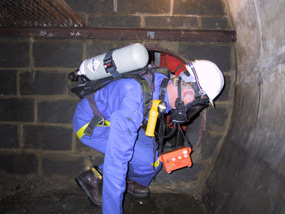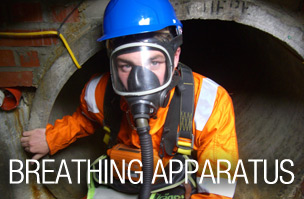Confined SPaces
APPROVED CODE OF PRACTICE AND GUIDANCE
The code of practice is approved for the purposes of providing practical guidance with respect to the requirements of the Confined Spaces Regulations 1997 and other relevant legislation.
The code of practice makes several references to training including the following:
Those likely to be involved in any emergency rescue should be trained for that purpose. The training needs for each individual will vary according to their designated role. It is important that refresher training is organised and available on a regular basis, for example annually. Training may include:
- The likely causes of an emergency
- Use of rescue equipment, e.g. breathing apparatus, lifelines, and where necessary a knowledge of its construction and working
- Identifying defects and dealing with malfunctions and failures of equipment during use
- Resuscitation procedures and, where appropriate, the correct use of relevant ancillary equipment and any resuscitation equipment provided (if intended to be operated by those receiving emergency rescue training)
- Emergency first aid and the use of the first aid equipment provided
- Rescue techniques including regular and periodic rehearsals/exercises. This could include the use of a full-weigh tdummy. Training should be realistic and not just drill based, and should relate to practice and familiarity with equipment. (Our two-day course covers everything except the emergency first aid. Emergency first aid is covered in the three day course)
Employers are required to provide such information, instruction, training and supervision as is necessary to ensure the health and safety at work of employees. Specific training for work in confined spaces will depend on an individual's previous experience and the type of work they will be doing. It is likely that this training will need to cover:
- An awareness of the Confined Spaces Regulations and in particular the need to avoid entry to a confined
space, unless it is not reasonably practicable to do so, in accordance with regulation 4(1) - An understanding of the work to be undertaken, the hazards, and the necessary precautions
- An understanding of safe systems of work, with particular reference to 'permits-to-work'
where appropriate - How emergencies arise, the need to follow prepared emergency arrangements, and the dangers of not doing so.
(All the above areas are covered by our 1, 2 & 3-day courses)
Training should also take into account the practical use of safety features and equipment, the identification of defects and, where appropriate, it should involve demonstrations and practical exercises. It is important that trainees are familiar with both equipment and procedures before working for the first time in confined spaces (covered by our 1, 2 & 3 day courses).
Practical refresher training should be organised and available. The frequency with which refresher training is provided will depend upon how long since the type of work was last done, or if there have been changes to methods of work, safety procedures or equipment.
Training in specific safety features may include an or all of the following:
- use of atmospheric testing equipment, and the action to take depending on the readings
- use of breathing apparatus and escape sets, their maintenance, cleaning and storage
- use of other items of personal protective equipment
- instruction in the communication methods to be used whilst in the confined space.
Confined Spaces Courses
- Confined Spaces - Working in a Medium Risk Confined Space
- Confined Spaces - Working in a High Risk Confined Space
- Confined Spaces - Awareness & Risk Assessment

![]()
![]()
![]()







